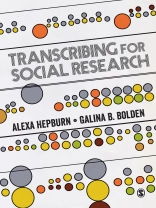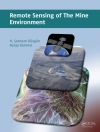How can we capture the words, gestures and conduct of study participants? How do we transcribe what happens in social interactions in analytically useful ways? How could systematic and detailed transcription practices benefit research?
This book demonstrates how best to represent talk and interaction in a manageable and academically credible way that enables analysis. It describes and assesses key methodological and epistemological debates about the status of transcription research while also setting out best practice for handling different types of data and forms of social interaction.
Featuring transcribing basics as well as important recent developments, this book guides you through:
- Time and sequencing
- Speech delivery and patterns
- Non-vocal conduct
- Emotive displays like laughter, tears, or pain
- Talk in non-English languages
- Helpful technological resources
As the first book-length exposition of the Jeffersonian transcription conventions, this well-crafted balance of theory and practice is a must-have resource for any social scientist looking to produce high quality transcripts.
İçerik tablosu
Foreword: Emanuel A Schegloff
Chapter 1: Introduction
Chapter 2: Getting Started with Transcription
Chapter 3: Timing and Sequencing in Transcription
Chapter 4: Transcribing Speech Delivery
Chapter 5: Transcribing Aspiration and Laughter
Chapter 6: Transcribing Crying, Expressions of Pain and Other Non-Speech Sounds
Chapter 7: Transcribing Visible Conduct
Chapter 8: Transcribing for Languages Other than English
Chapter 9: Technological Resources for Transcription
Chapter 10: Comparisons, Concerns and Conclusions
Yazar hakkında
Alexa Hepburn is a research professor in the Department of Communication at Rutgers University. Her research is focused on the use and development of conversation analytic methods, in particular, emotional expressions, parents′ strategies for managing children′s behavior, and techniques for giving advice and responding empathically to distress. Analytic insights are then applied in professional–client encounters, such as medical consultations, therapeutic environments, and helpline interactions.












